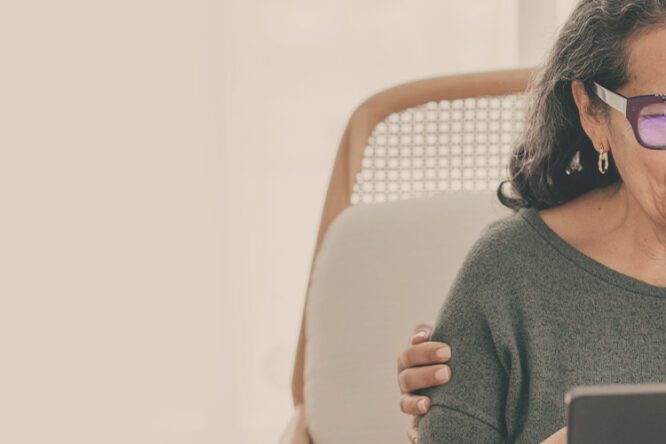Reprinted with permission from interestingfacts.com.
It’s a fact of life — people grow old. While modern society tends to obsess about the negatives of aging, studies suggest that we often experience more happiness and contentment in our later years. These 12 facts investigate the phenomenon of growing old, debunk some persistent myths about aging, and explore the brighter side of those golden years.
- Say Goodbye To Migraines
As our bodies age, they naturally become more susceptible to a variety of illnesses and maladies — but migraines are the rare exception. Migraines often first develop in adolescence, and while both sexes are affected, women are three times more likely to develop migraines compared to men (often due to a fluctuation in estrogen levels). However, the frequency of migraines eventually peaks at the age of 40 and actually gets better as we enter our golden years. Stress and hormones are the most common triggers for migraines, and these two factors usually affect older people with less severity. That said, pain, smoking and alcohol can still contribute to migraines in seniors, and although migraines generally subside with age, they are still the second-most-common headache disorder in older people (after tension headaches). One in 10 older adults still experience them about once a year.
- Hair Doesn’t Actually “Turn” Gray
One of the hallmarks of aging is that our lifelong hair color begins to turn gray, or in some cases, white. Although an entire industry is built around hiding this fact, human hair isn’t actually turning gray so much as it’s no longer supplying the pigments necessary to produce color. This occurs when hydrogen peroxide builds up after wear-and-tear on the hair follicles. That blocks the normal synthesis of melanin, which is responsible for all shades of hair color.
- Older Adults Are Happier Than People In Their 20s on Average
As people age, we also gain a certain calm. A study published in 2016 in The Journal of Clinical Psychiatry analyzed a random sample of 1,546 people ages 21 to 100 in San Diego. Although younger people in the survey responded positively in terms of physical health compared to older folks (as anticipated), older adults far outperformed younger generations in terms of mental well-being. Panic disorders are also reported as less common among older cohorts compared to younger people, and developing a panic disorder later in life is a rarity.
- They Also Sweat Less, Too
As we age, our skin loses collagen, gets thinner, and presses our sweat glands close to the surface of our skin. This process is a bit of a double-edged sword. On the one hand, because these glands are squeezed, it’s harder for sweat to come out of our pores, meaning older people sweat less overall. This may be a check mark in the “pro” column for personal hygiene, but it does come with a few negative side effects. With a reduced ability to sweat, older adults can have trouble regulating temperature during strenuous exercise or excessive heat. Sweat also plays an important role in healing, as it helps stimulate wound closure in skin cells. Thankfully, a lifetime of physical fitness helps slow down this process so you can sweat long into your golden years.
- Older People Vote More Than Any Other Age Group
Older people may not feel as strong as they did in their youth, but in terms of political power, they’re as strong as ever. In 2018, 64% of people 65 and over voted in the U.S. midterm election — the highest turnout of any age group — and the 65-to-74-year-old cohort also had the highest turnout in the 2020 election. There are a couple of reasons why the older vote is particularly robust. The biggest may be that older Americans, as well as seniors in other democracies, have government programs and initiatives they rely on, such as Medicare, prescription drug pricing, and Social Security, and because these policies so directly affect them, elections tend to turn out seniors in higher numbers. (There are other factors at play, too — older folks may simply have more time on their hands.) Senior citizens also grease the wheels of democracy, as they’re the most likely age group to volunteer as poll workers on Election Day.
- Noses and Ears Don’t Keep Growing, But They Do Droop
While a common myth purports that our ears and nose continue to grow as we age (while the rest of us generally shrinks), that’s not entirely true. Like most other parts of our body, our ears and nose stop growing once we’re in adulthood, but the constant tug of gravity over the decades causes these cartilage-filled features to droop over time. This constant pull actually causes the collagen and elastic fibers in our ears and nose to elongate, and this lengthening, combined with surrounding facial structures losing overall volume, often produces the illusion of growing ears and noses as we age. This elongation is a slow and steady process; studies have shown that ears can lengthen some 0.22 millimeters a year. Interestingly, the process is so precise that you can discern a person’s age just by measuring their ears.
- Old Age Isn’t a Modern Phenomenon
A common misconception about old age is that it’s a relatively modern phenomenon, as our predecessors lived brutish lives cut short by disease and war. While modern medicine has certainly expanded life expectancy, many people in the past lived as long as people live today. For example, some ancient Roman offices sought by politically ambitious men couldn’t even be held until someone was 30 — not exactly a great idea if people didn’t live many years beyond that. Scientists have analyzed the pelvis joints (a reliable indicator of age) in skeletons from ancient civilizations and found that many people lived long lives. One study analyzing skeletons from Cholula, Mexico, between 900 and 1531 CE found that a majority of specimens lived beyond the age of 50. Low life expectancy in ancient times is impacted more by a high infant mortality rate than by people living unusually short lives. Luckily, modern science has helped more humans survive our vulnerable childhood years, and life expectancy averages have risen as a result.
- Older People Requiring Less Sleep is a Myth
Another myth about getting old is that as we age, humans need less and less sleep, somehow magically subsisting on six hours or less when we enter our senior years. The truth is that the amount of sleep a person needs is only altered during childhood and adolescence, as our bodies need more energy to do the tough work of growing. Once we’re in our 20s, humans require the same amount of sleep per night for the rest of their lives (though the exact amount differs from person to person). In fact, the elderly are more likely to be sleep-deprived because they receive lower-quality sleep caused by sickness, pain, medications, or a trip or two to the bathroom. This can be why napping during the day becomes more common as we grow older.
- Some of Our Bones Never Stop Growing
The common perception of human biology is that our bones put on some serious inches in our youth, and then by the time we’re 20 or so, nature pumps the brakes and our skeleton stays static forever. While that’s true of a majority of our bones, some don’t follow this simplistic blueprint. A 2008 study for Duke University determined that the bones in the skull continue to grow, with the forehead moving forward and cheek bones moving backward. Unfortunately, this imperceptible bit of a facial movement exacerbates wrinkles, because as the skull shifts forward, the overlying skin sags.
The pelvis also keeps growing throughout your life. Scientists analyzing the pelvic width of 20-year-olds compared to 79-year-olds found a 1-inch difference in width, which adds an additional 3 inches to your waistband. That means our widening in the middle as we age isn’t just about a slower metabolism.
- Pupils Get Smaller As We Age
While our hips get bigger, our pupils get smaller. The human pupil is controlled by the circumferential sphincter and iris dilator muscles, and as we add on the years, those muscles weaken. Because of this loss of muscle function, pupils get smaller as we age, and are also less responsive to light. Smaller pupils make it harder to see at night, so people in their 60s need three times as much light to read comfortably as people in their 20s. Reading a menu in a dimly lit restaurant? Forget about it. Other eye changes include an increased likeliness of presbyopia, or farsightedness (which can often be resolved with reading glasses), and cataracts, or a clouding of the eye’s lens. In fact, half of people over the age of 80 will have experienced a cataract of some kind.
- Older People Have a Stronger “Immune Memory”
Although the body experiences some slowing down as we age, growing old isn’t all bad news. Researchers from the University of Queensland found that older people had stronger immunities than people in their 20s, as the body keeps a repository of illnesses that can stretch back decades. This extra line of defense begins to drop off in our 70s and 80s, but until then, our bodies generally just get better and better at fighting off disease due to biological experience. Additionally, as we age we experience fewer migraines, the severity of allergies declines, and we produce less sweat. Older people also exhibit higher levels of “crystalized intelligence” (or what some might call “wisdom”) than any other age group.
- The Atoms That Make Up All of Us Are Already Billions of Years Old
It’s true that age is just a number, and in the cosmic view of the universe, human age is pretty insignificant. The atoms that make up the human body are already billions of years old. For example, hydrogen — one of the key components of our bodies — formed in the Big Bang 13.7 billion years ago. Likewise, carbon, the primary component of all known life, formed in the fiery cauldron of stars at least 7 billion years ago. So when someone says we’re all made of “star stuff,” they’re very much telling the truth (we’re also made from various supernovae). And while we grow old on Earth, this is only the latest chapter of a story that stretches back to the beginning of everything — and it’s a story that’ll continue until the universe ends.


